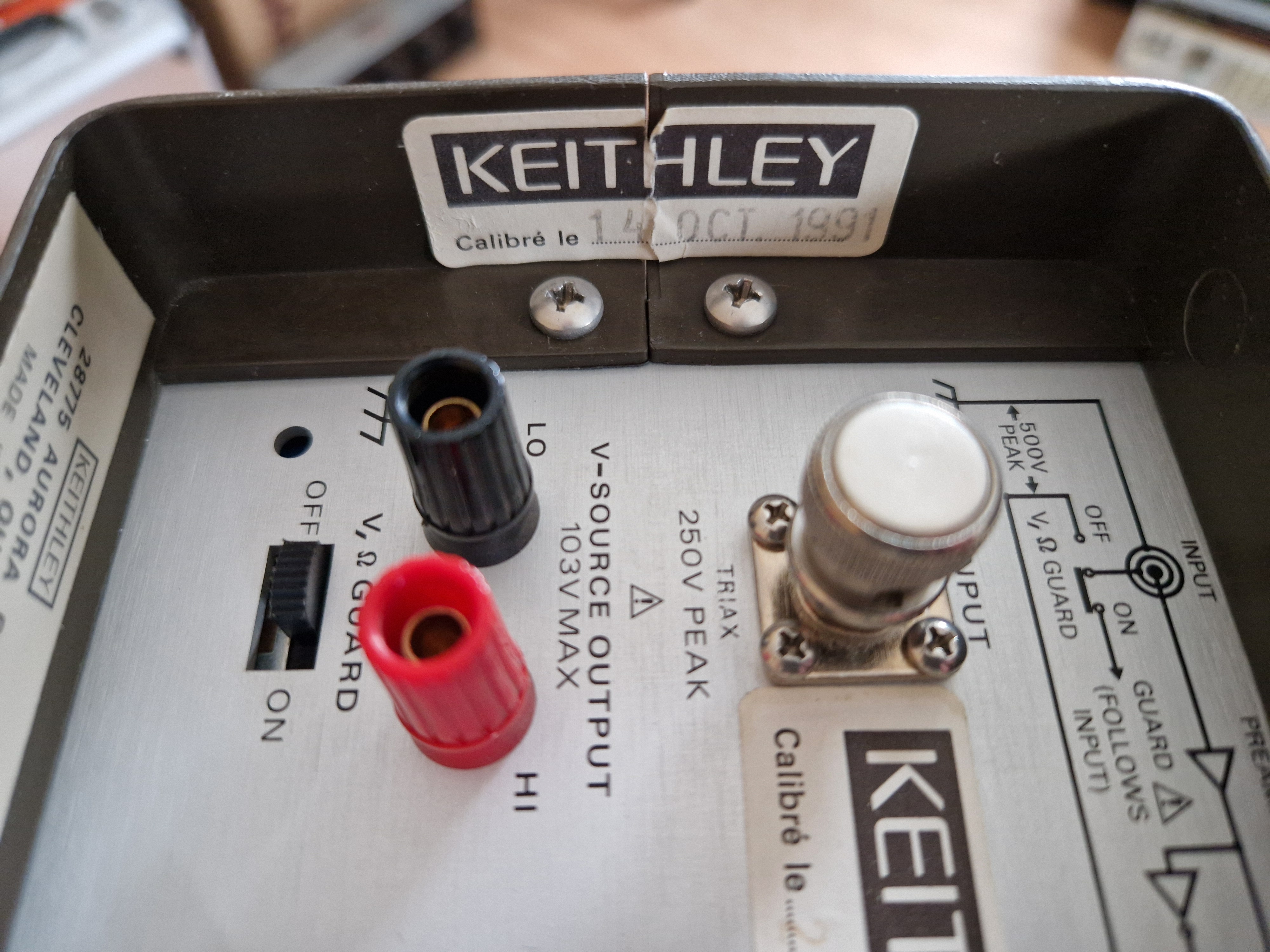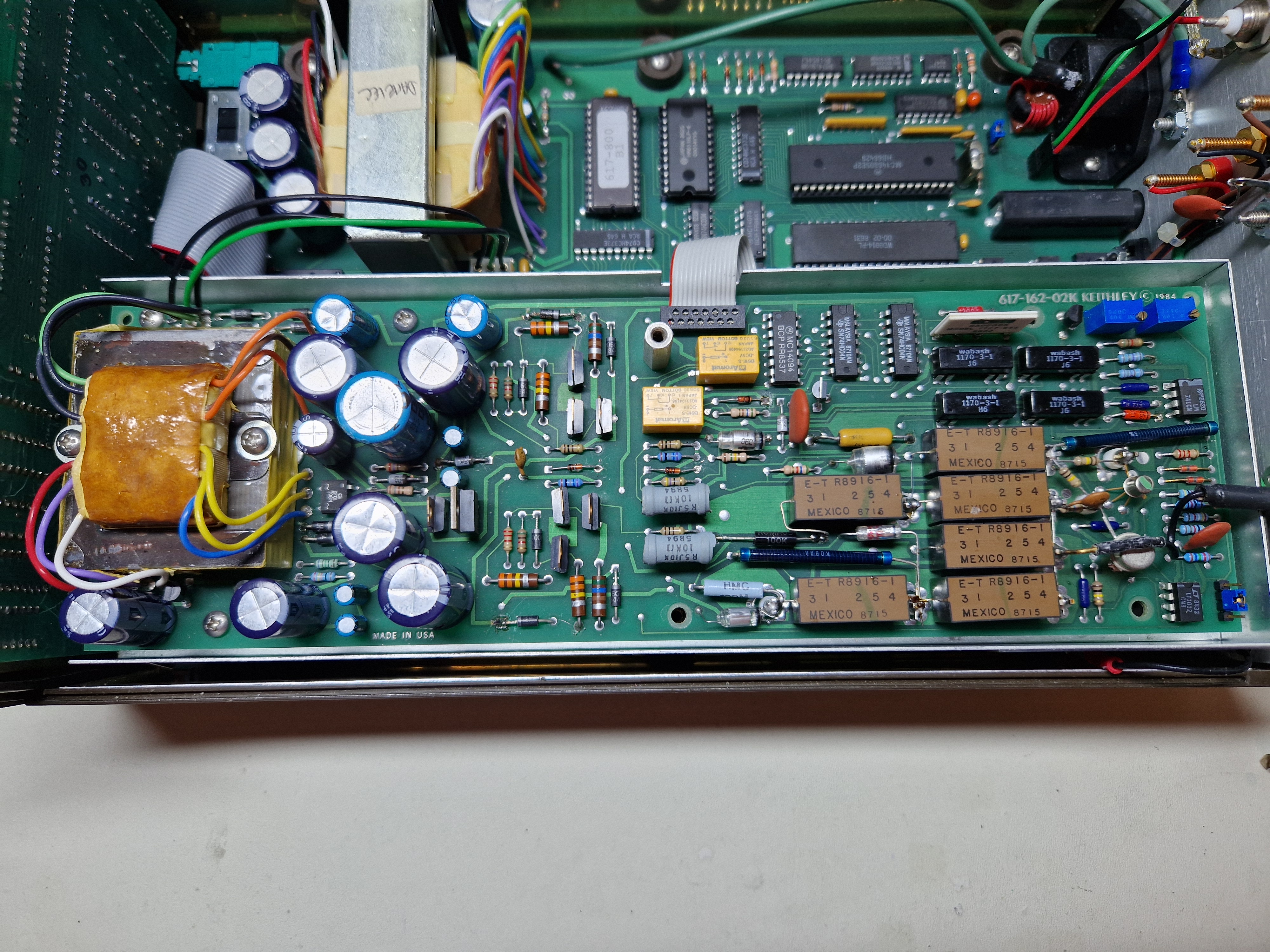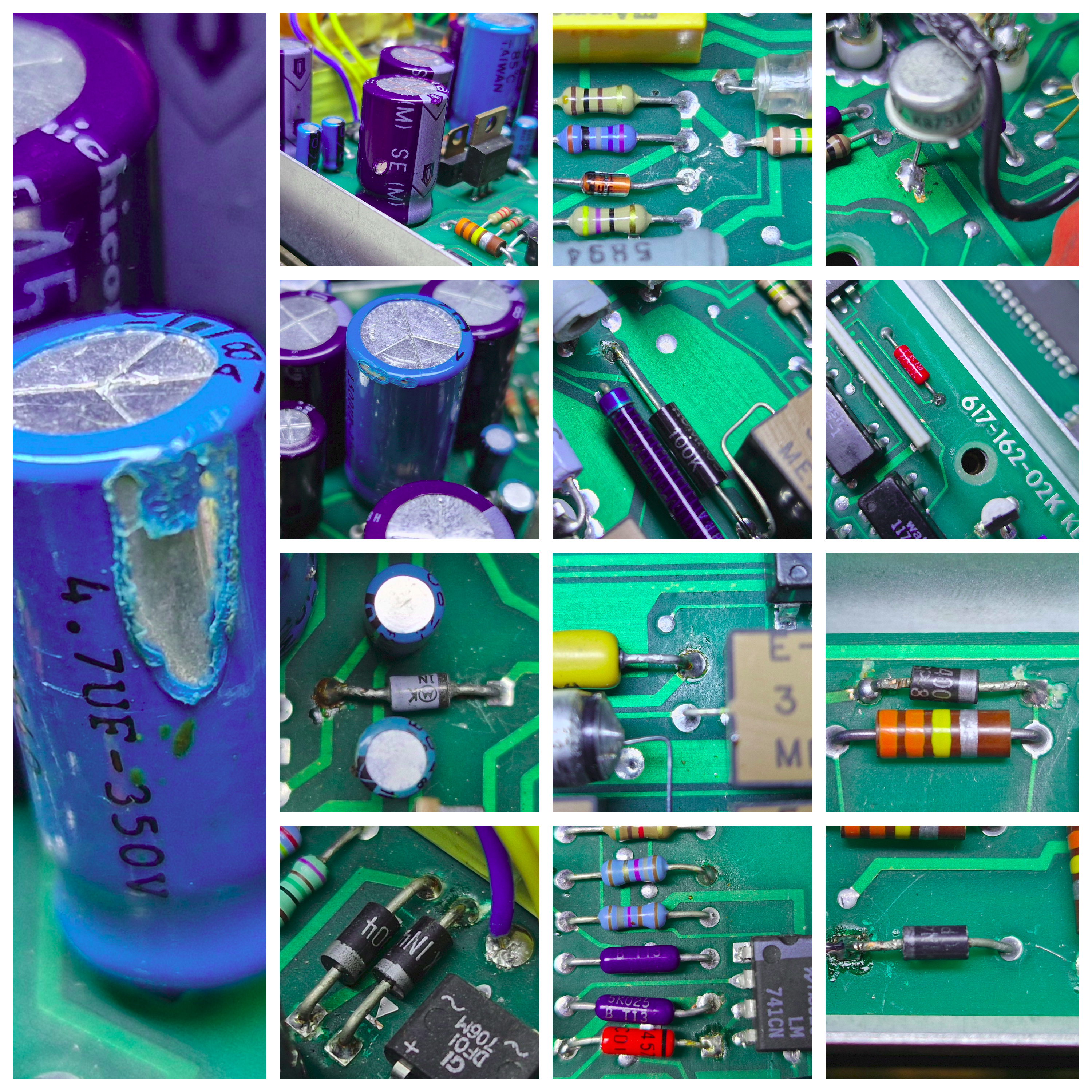As you do, you take it apart! Before I opened the top case, this calibration sticker from 1991 was unbroken.

Some time before that sticker was applied, the meter was repaired, I can only assume, by Keithley themselves. At first glance, things looked OK inside.

The analogue board is a revision K and the date codes on the various chips suggest it was manufactured in early 1987.
As I started looking closer at the analogue board though, I started noticing things. Bad things. Soldering iron burned insulation on electrolytic capacitors, Flux residue in both the power supply area and in the critical shielded circuitry. PCB damage and other evidence of a gorilla having been let loose on this incredibly sensitive piece of equipment.
If you have a sensitive disposition, you may want to avoid looking at the next image (it's even clickable for full size if you have a strong stomach).

I know there is a school of thought which says "cleaning flux residue off after a repair is worse than leaving it there" and I do understand that point of view for smaller and very limited repairs. Here though, many components have either been replaced, resoldered, chewed by metal eating cockroaches, etc and the residue around some of the fixes in the most sensitive area is just waiting for a very humid day.
The thing is, the meter is not unusually noisy, it needs calibration on all ranges as they all have a constant (by scale), slightly low reading against any of my standards. But it settles to a stable zero reading on the most sensitive ranges and it works on all functions and ranges showing no signs at all of any problems.
But now I know the injustices that have been perpetrated upon it. The flux spatter around all the repairs is significant. There are little dark brown, shiny spots all over the components and the PCB. The burned insulation annoys me just as a matter of principle. The fact that this seems to have been done by the manufacturer themselves seems to go along with previous images in this thread where there are components with inexplicable pools of dark brown flux around where they enter the top side of the PCB. (I haven't dared remove the bottom cover yet for fear of seeing more horror!)
My OCD screams - "Take it apart, make it right!" The pragmatist in me says "It works, leave it alone."
What do you say?